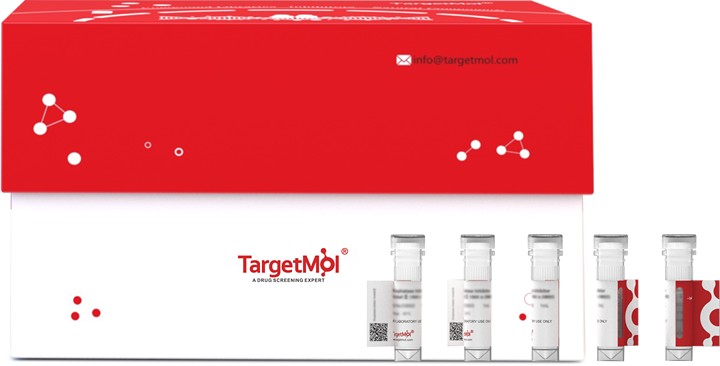Antagonizes canonical Wnt signaling by inhibiting LRP5/6 interaction with Wnt and by forming a ternary complex with the transmembrane protein KREMEN that promotes internalization of LRP5/6. DKKs play an important role in vertebrate development, where they locally inhibit Wnt regulated processes such as antero-posterior axial patterning, limb development, somitogenesis and eye formation. In the adult, Dkks are implicated in bone formation and bone disease, cancer and Alzheimer disease. DKK2 Protein, Human, Recombinant (His & SUMO) is expressed in E. coli expression system with N-6xHis-SUMO tag. The predicted molecular weight is 41.0 kDa and the accession number is Q9UBU2.

| パッケージサイズ | 在庫状況 | 単価(税別) |
|---|---|---|
| 20 μg | 約20 days | ¥ 45,500 |
| 100 μg | 約20 days | ¥ 89,500 |
| 1 mg | 約20 days | ¥ 385,500 |
| 説明 | Antagonizes canonical Wnt signaling by inhibiting LRP5/6 interaction with Wnt and by forming a ternary complex with the transmembrane protein KREMEN that promotes internalization of LRP5/6. DKKs play an important role in vertebrate development, where they locally inhibit Wnt regulated processes such as antero-posterior axial patterning, limb development, somitogenesis and eye formation. In the adult, Dkks are implicated in bone formation and bone disease, cancer and Alzheimer disease. DKK2 Protein, Human, Recombinant (His & SUMO) is expressed in E. coli expression system with N-6xHis-SUMO tag. The predicted molecular weight is 41.0 kDa and the accession number is Q9UBU2. |
| Species | Human |
| Expression Host | E. coli |
| Tag | N-6xHis-SUMO |
| Accession Number | Q9UBU2 |
| 別名 | Dickkopf-related protein 2, DKK2, Dickkopf-2, Dkk-2, hDkk-2 |
| Amino Acid | KLNSIKSSLGGETPGQAANRSAGMYQGLAFGGSKKGKNLGQAYPCSSDKECEVGRYCHSPHQGSSACMVCRRKKKRCHRDGMCCPSTRCNNGICIPVTESILTPHIPALDGTRHRDRNHGHYSNHDLGWQNLGRPHTKMSHIKGHEGDPCLRSSDCIEGFCCARHFWTKICKPVLHQGEVCTKQRKKGSHGLEIFQRCDCAKGLSCKVWKDATYSSKARLHVCQKI |
| Construction | 34-259 aa |
| Protein Purity | > 90% as determined by SDS-PAGE. |
| 分子量 | 41.0 kDa (predicted) |
| Formulation | Tris-based buffer, 50% glycerol |
| Reconstitution | A Certificate of Analysis (CoA) containing reconstitution instructions is included with the products. Please refer to the CoA for detailed information. |
| Stability & Storage |
Lyophilized powders can be stably stored for over 12 months, while liquid products can be stored for 6-12 months at-80℃. For reconstituted proteinsolutions, the solution can be stored at -20°c to -80'c for at least 3 months. Please avoid multiple freeze-thaw cycles and store products in aliquots. |
| Shipping |
In general, Lyophilized powders are shipping with blue ice. Solutions are shipping with dry ice. |
| Research Background | Antagonizes canonical Wnt signaling by inhibiting LRP5/6 interaction with Wnt and by forming a ternary complex with the transmembrane protein KREMEN that promotes internalization of LRP5/6. DKKs play an important role in vertebrate development, where they locally inhibit Wnt regulated processes such as antero-posterior axial patterning, limb development, somitogenesis and eye formation. In the adult, Dkks are implicated in bone formation and bone disease, cancer and Alzheimer disease. |
bottom
Please read the User Guide of Recombinant Proteins for more specific information.
DKK2 Protein, Human, Recombinant (His & SUMO) Dickkopf-related protein 2 DKK2 Dickkopf-2 Dkk-2 hDkk-2 recombinant recombinant-proteins proteins protein
